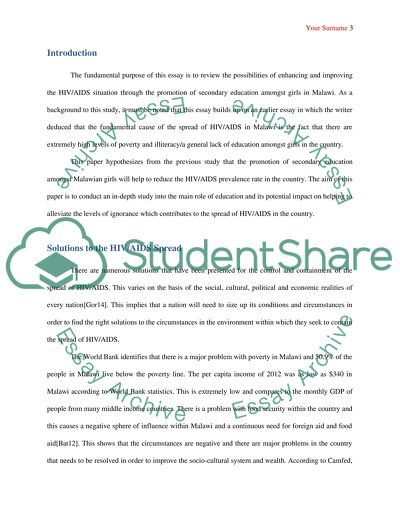Cite this document
(Enhancing and Improving the HIV/AIDS Situation in Malawi Case Study, n.d.)
Enhancing and Improving the HIV/AIDS Situation in Malawi Case Study. Retrieved from https://studentshare.org/health-sciences-medicine/1645904-curbing-the-spread-of-hivaids-in-malawi-through-mandatory-secondary-school-education-for-women
Enhancing and Improving the HIV/AIDS Situation in Malawi Case Study. Retrieved from https://studentshare.org/health-sciences-medicine/1645904-curbing-the-spread-of-hivaids-in-malawi-through-mandatory-secondary-school-education-for-women
(Enhancing and Improving the HIV/AIDS Situation in Malawi Case Study)
Enhancing and Improving the HIV/AIDS Situation in Malawi Case Study. https://studentshare.org/health-sciences-medicine/1645904-curbing-the-spread-of-hivaids-in-malawi-through-mandatory-secondary-school-education-for-women.
Enhancing and Improving the HIV/AIDS Situation in Malawi Case Study. https://studentshare.org/health-sciences-medicine/1645904-curbing-the-spread-of-hivaids-in-malawi-through-mandatory-secondary-school-education-for-women.
“Enhancing and Improving the HIV/AIDS Situation in Malawi Case Study”. https://studentshare.org/health-sciences-medicine/1645904-curbing-the-spread-of-hivaids-in-malawi-through-mandatory-secondary-school-education-for-women.


